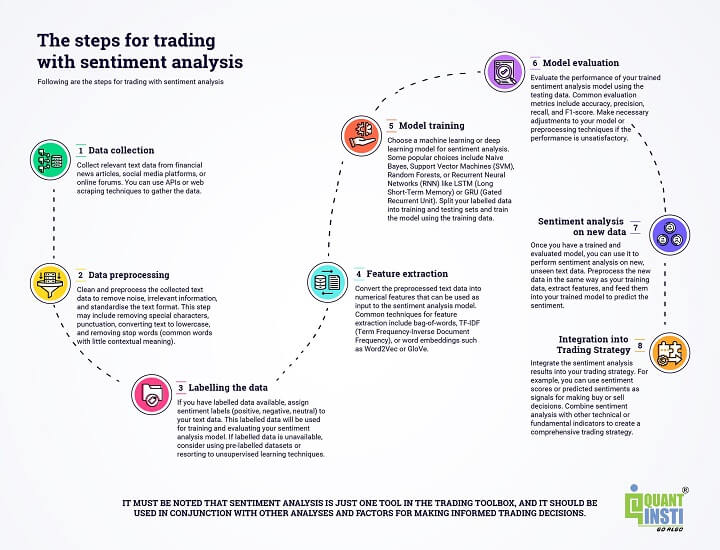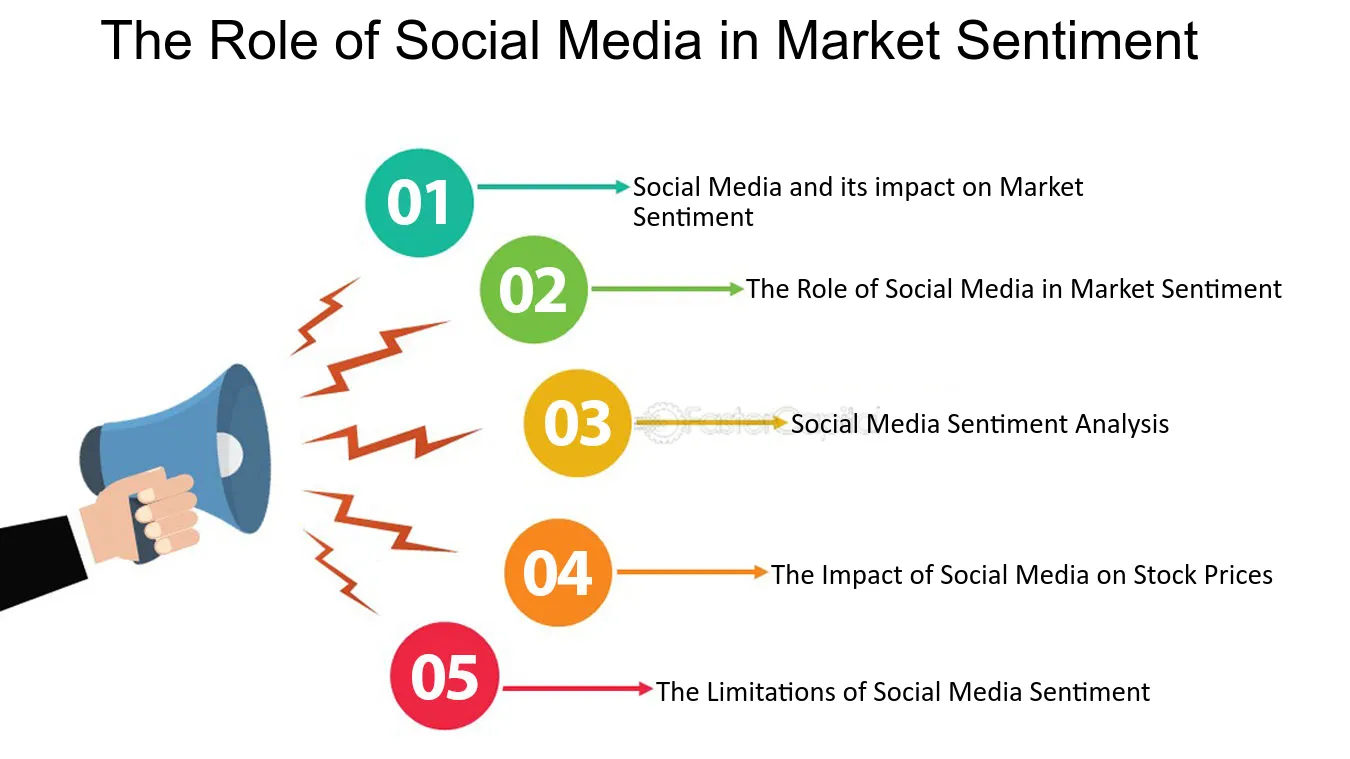Did you know that market sentiment can swing faster than a pendulum on a caffeine rush? In the world of day trading, understanding both sentiment analysis and technical analysis is crucial for making informed decisions. This article dives into the nuances of sentiment and technical analysis, exploring their definitions, key differences, and how they can enhance trading strategies. Discover the essential tools for sentiment analysis, the indicators that drive technical analysis, and learn when to leverage each approach. Additionally, we’ll discuss the impact of news events and social media on market sentiment, along with common pitfalls to avoid. By the end, you’ll grasp how combining both analyses can lead to more effective trading strategies. Join us at DayTradingBusiness to sharpen your skills and navigate the market with confidence.
What is Sentiment Analysis in Day Trading?
Sentiment analysis in day trading involves evaluating market sentiment to gauge the emotions and attitudes of traders toward a stock or the market. It uses data from news articles, social media, and trading volumes to identify bullish or bearish trends. Unlike technical analysis, which focuses on price charts and indicators, sentiment analysis taps into the collective mood, helping traders make informed decisions based on market psychology. By understanding sentiment, day traders can anticipate price movements more effectively.
How Does Technical Analysis Work in Day Trading?
Technical analysis in day trading involves using historical price data and trading volume to identify patterns and predict future price movements. Traders analyze charts, indicators, and trends to make quick buy or sell decisions. Unlike sentiment analysis, which gauges market mood based on news and social factors, technical analysis focuses purely on price action. Common tools include moving averages, RSI, and support/resistance levels. By recognizing patterns, traders aim to capitalize on short-term fluctuations in the market.
What Are the Key Differences Between Sentiment and Technical Analysis?
Sentiment analysis focuses on market psychology, gauging trader emotions and opinions through news, social media, and surveys. It helps identify potential price movements based on collective sentiment.
Technical analysis, on the other hand, involves studying historical price data and chart patterns to predict future price movements. It relies on indicators like moving averages and volume.
In summary, sentiment analysis captures the mood of the market, while technical analysis uses data to forecast trends.
How Can Sentiment Analysis Improve Day Trading Strategies?
Sentiment analysis can enhance day trading strategies by providing insights into market emotions and public perception. It helps traders gauge market sentiment through social media, news, and forums, allowing them to anticipate price movements driven by collective psychology. Unlike technical analysis, which focuses solely on price patterns and indicators, sentiment analysis reveals the underlying mood of investors, which can lead to better timing for entry and exit points. By integrating sentiment data with technical indicators, traders can make more informed decisions, increasing their chances of profitable trades.
What Tools Are Used for Sentiment Analysis in Trading?

Tools for sentiment analysis in trading include:
1. Social Media Analytics: Platforms like Twitter and StockTwits help gauge market sentiment through real-time data.
2. News Sentiment Analysis: Tools like Bloomberg Terminal and Sentifi analyze news for positive or negative sentiment.
3. Natural Language Processing (NLP): Software like Python’s NLTK or TextBlob processes and interprets sentiment from text data.
4. Market Sentiment Indicators: Tools like the Fear & Greed Index provide visual indicators of market sentiment.
5. Sentiment Analysis APIs: Services like AlphaSense or RavenPack offer APIs for integrating sentiment data into trading models.
These tools can complement technical analysis by providing a broader view of market psychology.
How Can Technical Analysis Help Predict Market Trends?
Technical analysis helps predict market trends by using historical price data and trading volume to identify patterns and signals. Traders analyze charts, trends, support and resistance levels, and indicators like moving averages and RSI to make informed decisions. This method allows traders to gauge market sentiment and timing, increasing the likelihood of successful trades. In contrast to sentiment analysis, which focuses on news and social factors, technical analysis provides a data-driven approach to understanding market movements.
What Are the Limitations of Sentiment Analysis in Trading?
Sentiment analysis in trading has several limitations. It can be influenced by noise, such as social media hype or misleading news, leading to false signals. It often relies on subjective interpretations, making it less reliable than quantitative measures. Additionally, sentiment data may lag behind market movements, causing traders to miss critical opportunities. It also struggles to account for market manipulation or sudden changes in investor behavior. Unlike technical analysis, which uses historical price patterns and indicators, sentiment analysis lacks the precision and objectivity needed for day trading success.
When Should Traders Use Technical Analysis Over Sentiment Analysis?
Traders should use technical analysis over sentiment analysis when they need to make quick, data-driven decisions based on price movements and historical patterns. Technical analysis is effective for identifying entry and exit points, spotting trends, and setting stop-loss orders. It’s particularly useful in fast-moving markets where price action is more relevant than broader market sentiment. Use sentiment analysis to gauge market mood or long-term trends, but rely on technical analysis for precise, short-term trading strategies.
How Do News Events Impact Sentiment in Day Trading?
News events significantly impact sentiment in day trading by influencing traders' perceptions and emotions. Positive news can drive bullish sentiment, leading to increased buying pressure, while negative news often results in bearish sentiment and selling. Traders use sentiment analysis to gauge market reactions to news, contrasting it with technical analysis, which focuses on price patterns and historical data. For example, a strong earnings report might trigger a surge in stock price, while geopolitical tensions could lead to rapid declines. Understanding sentiment helps traders make informed decisions in volatile markets.
What Indicators Are Essential for Technical Analysis?
Essential indicators for technical analysis in day trading include moving averages, Relative Strength Index (RSI), Bollinger Bands, MACD (Moving Average Convergence Divergence), and volume. Moving averages help identify trends, RSI indicates overbought or oversold conditions, Bollinger Bands provide insight into volatility, MACD shows momentum shifts, and volume confirms price movements. Use these tools to enhance your trading decisions.
How Can Traders Combine Sentiment and Technical Analysis?
Traders can combine sentiment and technical analysis by using sentiment indicators alongside chart patterns. Start by analyzing market sentiment through tools like social media trends, news sentiment, and trader surveys. Then, overlay this data with technical indicators such as moving averages, support and resistance levels, or candlestick patterns.
For example, if sentiment is bullish and the price is near a support level, it may signal a good buying opportunity. Conversely, if sentiment turns negative while the price is near resistance, it could indicate a potential sell. This approach enhances decision-making by integrating emotional market dynamics with quantitative price movements.
Learn about How Do Institutional Traders Use Technical and Fundamental Analysis?
What Role Does Market Psychology Play in Sentiment Analysis?
Market psychology significantly influences sentiment analysis by capturing trader emotions and perceptions. Sentiment analysis focuses on understanding how news, social media, and market events affect traders' attitudes, leading to buying or selling decisions. In contrast, technical analysis relies on historical price data and patterns without addressing the emotional factors driving market movements. Recognizing sentiment can provide insights into potential market trends, as positive or negative feelings can lead to rapid price changes, impacting day trading strategies. By incorporating sentiment analysis, traders can better gauge market conditions and make informed decisions based on psychological trends.
How Can Social Media Influence Sentiment Analysis in Trading?

Social media influences sentiment analysis in trading by providing real-time insights into public opinion and market sentiment. Traders use platforms like Twitter and Reddit to gauge reactions to news, events, or stock movements, which can affect price trends. Unlike technical analysis, which relies on historical price patterns and indicators, sentiment analysis captures the emotional responses of investors. Positive or negative sentiment can lead to swift buying or selling, impacting market volatility. By integrating social media data, traders can enhance their decision-making and potentially predict market movements more accurately.
What Are Common Mistakes in Using Sentiment Analysis?
Common mistakes in using sentiment analysis for day trading include:
1. Overreliance on sentiment data without combining it with technical indicators, which can lead to poor trading decisions.
2. Ignoring the context behind sentiment shifts, such as news events or market conditions that may skew results.
3. Misinterpreting sentiment signals, assuming positive sentiment always means a price increase, which isn’t guaranteed.
4. Failing to account for lag in sentiment data, which can result in delayed reactions to market changes.
5. Not adjusting sentiment analysis for different time frames, as what’s relevant for long-term strategies may not apply to day trading.
6. Overlooking the influence of market manipulation, where false sentiment can mislead traders.
Avoiding these pitfalls can enhance the effectiveness of sentiment analysis in conjunction with technical analysis for day trading success.
How Do Volume and Price Action Relate to Technical Analysis?
Volume and price action are crucial in technical analysis because they reveal market sentiment and trends. High volume during a price increase indicates strong buying interest, while high volume during a price drop suggests strong selling pressure. Traders use this relationship to identify potential reversals or continuations. For example, if a stock rises on increasing volume, it signals bullish sentiment, whereas a rise on low volume might indicate weak support. Understanding this interplay helps traders make informed decisions.
What Are the Best Practices for Effective Sentiment Analysis?
The best practices for effective sentiment analysis in day trading include:
1. Choose the Right Tools: Use reliable sentiment analysis tools that aggregate data from social media, news, and forums. Tools like Twitter sentiment analysis or news sentiment indicators can provide real-time insights.
2. Monitor Market Sentiment: Pay attention to overall market mood. Look for trends in bullish or bearish sentiment across various platforms.
3. Combine with Technical Analysis: Use sentiment analysis alongside technical indicators. This helps confirm signals and enhances decision-making.
4. Identify Key Sentiment Drivers: Focus on major news events, earnings reports, or market trends that significantly influence trader sentiment.
5. Analyze Volume and Velocity: Assess the volume of sentiment data and its speed. High volume and rapid changes often indicate stronger market moves.
6. Be Aware of Noise: Filter out irrelevant data. Not all sentiment reflects actionable insights; distinguish between genuine sentiment and hype.
7. Adapt to Market Conditions: Adjust your approach based on market volatility. In highly volatile markets, sentiment can change quickly.
8. Test and Refine Your Strategy: Regularly backtest your sentiment analysis methods to ensure their effectiveness in different market conditions.
By implementing these practices, you can enhance your day trading strategy through informed sentiment analysis.
Conclusion about Sentiment Analysis vs. Technical Analysis in Day Trading
In day trading, both sentiment analysis and technical analysis play crucial roles in shaping trading strategies. While sentiment analysis captures the market's mood and psychological factors, technical analysis relies on historical price data and indicators to forecast trends. Understanding the strengths and limitations of each approach allows traders to make informed decisions. By integrating insights from both analyses, traders can enhance their strategies and adapt to market dynamics effectively. For comprehensive support and insights, DayTradingBusiness offers valuable resources to help you navigate these analytical methods.
Learn about Order Flow Analysis vs. Technical Analysis in Day Trading
Sources:
- Prediction of stock market using sentiment analysis and ensemble ...
- Intraday online investor sentiment and return patterns in the U.S. ...
- A profitable trading algorithm for cryptocurrencies using a Neural ...
- Advancing Forex Prediction through Multimodal Text-Driven Model ...
- Technical patterns and news sentiment in stock markets ...